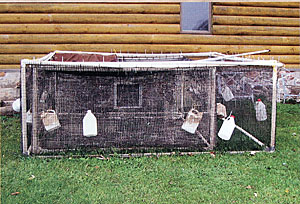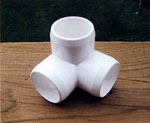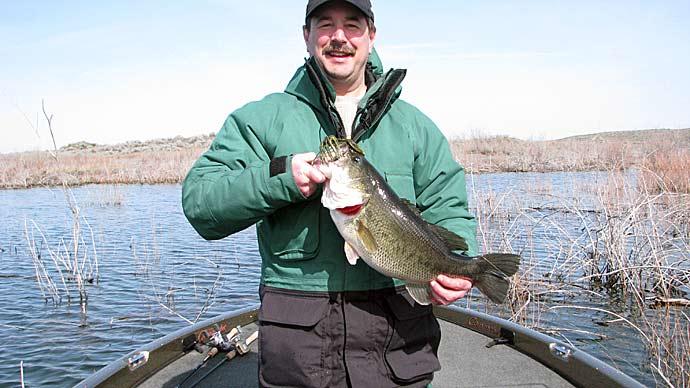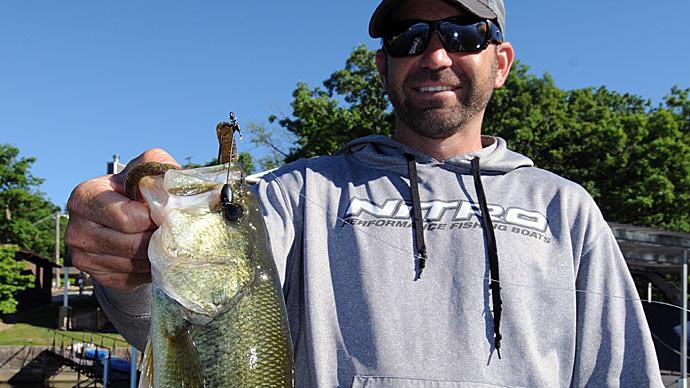
Need to augment your pond with more bass, but stocking fingerlings make them snacks for your larger bass? Having a tough time buying bigger smallmouth or largemouth from the local supplier? Or do they simply cost too much?
There's a better way.
Think about buying some young feed trained fingerlings in spring or early summer and feeding them inside the bounds of a protected cage in the same pond as the big ones.
Feed, grow and release next fall, when they are large enough to escape predation. Besides, most of the larger hatcheries around the nation now supply affordable feed trained bass fingerlings. It's more cost effective to condition them to pelleted fish food than living feed, so it's not that unusual to find feed trained fish anymore.

Different areas of the country have different availability. In the south and west, largemouth bass will live over winter. In parts of the Midwest and north, smallmouth can live in a cage all winter, so long as they have free water under the ice. That way, you can grow them one more year, if you choose.
Personally, I've been growing out fingerling largemouth and smallmouth like this for years with good success here in Indiana. In fact, fingerling bass have done better for me in cages than other species I raise, such as yellow perch and trout.
A cage built using PVC pipe as a frame is easy to build and the plastic material to cover it is not expensive. The cage also lasts a long time and can be used over and over again.
The cages I have built are fairly large at 7 by 7 feet by about 4 feet deep using three way connectors and 1-1/2 inch PVC pipe. However, slightly smaller cages may work just as well.
You pick, based on how many fish you intend to raise. My local home supply discount store sells inexpensive five foot sections of 1-1 /2 inch PVC pieces. Three way fittings and expanded plastic covering can be ordered from long time Pond Boss advertisers and supporters, Stoney Creek Fish Hatchery in Michigan. Of course, there are other suppliers too, like Pond Guy and Aquatic Ecosystems. I plant about 100 bass in a cage this size but I'm pretty sure that could be doubled if necessary with minimal problems.
Tips for Successful Cage Rearing
- A cage cover is imperative to protect fish from fish eating birds and to keep fish from jumping in or out.
- Make sure there is some shade over part of the cage to keep stress from sunlight down.
- Fish should be of similar size when planted or they eat each other.
- Keep the mesh clear of algae growth to allow fresh water circulation.
- Easiest to feed and care for the fish if the cage is attached to a pier.
- Feed the fish twice a day in morning and evening, if possible.
- Don't lift the cage or make lots of noise around the cage. Leave the fish alone until release. They'll spook and become distressed.
- At low densities the fish won't require any aeration. However a diffuser next to the cage is good insurance. I just add an extra line and diffuser to my present diffuser system. One diffuser between two cages is plenty.
- If possible position the cage over the deepest water, and so prevailing winds move water through the cage.
So, there you have it. Raise fish on a budget, keep them in sight, watch them eat and enjoy, all at the same time.
Reprinted with permission from Pond Boss Magazine



